Hurricane Florence was targeting Campbell Coxe’s farm. Days earlier, the 2018 storm had rapidly intensified in the Atlantic and was now on its way to South Carolina’s Darlington County.
Coxe had to make a quick decision: Which of his family’s crops would he save?
“When you only have 24 hours, you pick the most valuable,” Coxe recalled.
He chose Jimmy Red corn, an heirloom crop known to generations of moonshine aficionados for its nutty-sweet taste and high fat content. But scientists also know that it is one of the few plants that could help society grow food in the midst of a climate crisis where temperatures are rising, fresh water is scarce, and storms are getting stronger.
In what would normally have taken a week to accomplish, Coxe frantically harvested 50 acres of Jimmy Red in daylight and darkness just before the storm hit, destroying the remaining crops.
He delivered his savings to his only Jimmy Red customer in Charleston, two hours away.
“Not only was I counting on it, High Wire Distilling was definitely counting on it,” Coxe explained. “(Florence) sobered us up and scared us into thinking, ‘Hey, this is too much for one guy and we need to spread (Jimmy Red corn) around.'”
This wasn’t Jimmy Red’s first brush with disaster. In September 2008, nearly two decades before Florence struck Coxe’s farm, Ted Chewning stood in a Colleton County store holding two blood-red corn cobs.
“I was amazed by it,” said Chewning, a farmer and heirloom seed collector. “There was some nice corn on the cob.”
These were Jimmy Red’s last two ears.
A local bootlegger and last known Jimmy Red corn grower had just died, and the family no longer wanted to grow corn to distill whiskey. They gave the ears to the shop owner, who thought Chewning could do something with them.
“I held on to it through the winter, saved one ear, and planted the seeds from the second one in the spring,” Chewning said.
Years later, scientists realized that Chewning likely saved Jimmy Red from extinction, along with a genetic code that could help commercial corn breeders combat a rapidly changing climate.
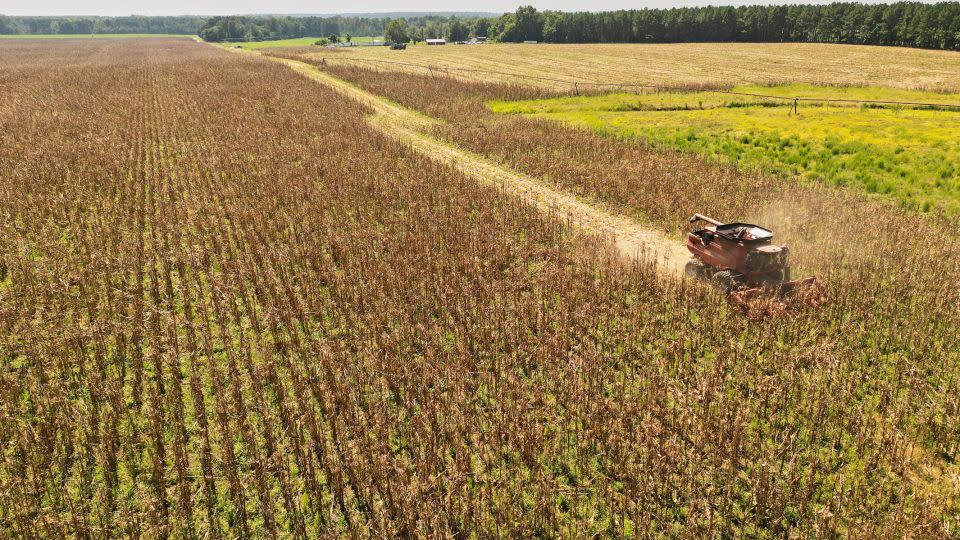
The past can fix the future
It’s not just the climate that’s changing; The global population is growing rapidly, reaching 8 billion late last year and is predicted to rise to over 10 billion by the 2080s. Clemson University research scientist Brian Ward said the world would have to grow more food with half the resources and half the land.
“Genes in heirloom corn could help us do this,” he said.
Jimmy Red’s numbers are dwindling because it’s not the kind of corn you can eat off the cob. It needs to be dried to remove its flavor and high fat content; ideal for making moonshine, but not valuable for large commercial farming.
Its value is in its genetics.
Heirloom grains, vegetables and fruits have developed characteristics that make them less vulnerable to climate change because they have been grown in very different conditions for hundreds of years, Ward said.
These traits can be used to breed varieties that can withstand harsher growing environments.
“An heirloom may have a gene that can produce well in extreme conditions,” Ward explained. “We have a geneticist who grows an heirloom bean. It may not be the best looking pod or have the highest yield, but it can produce in the heat and eventually we will develop it into a higher yielding variety.
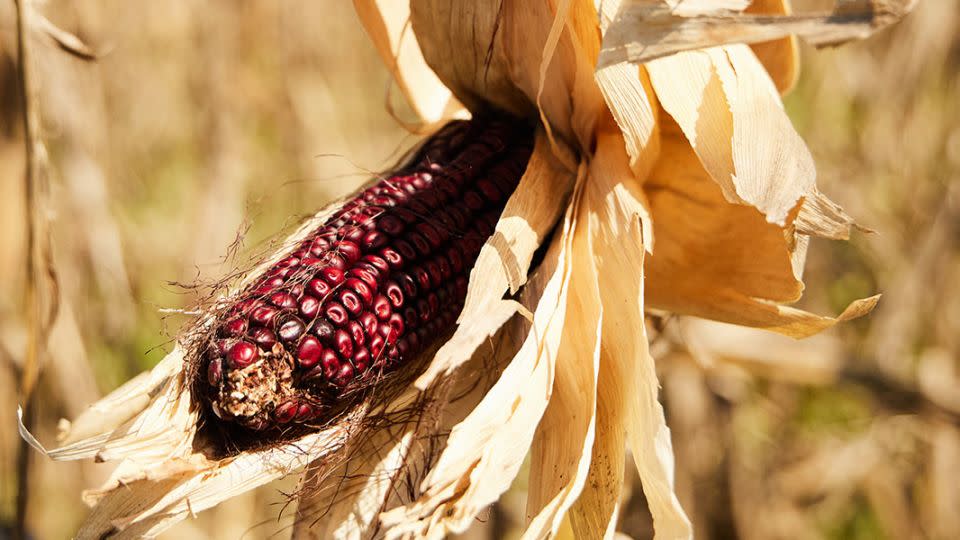

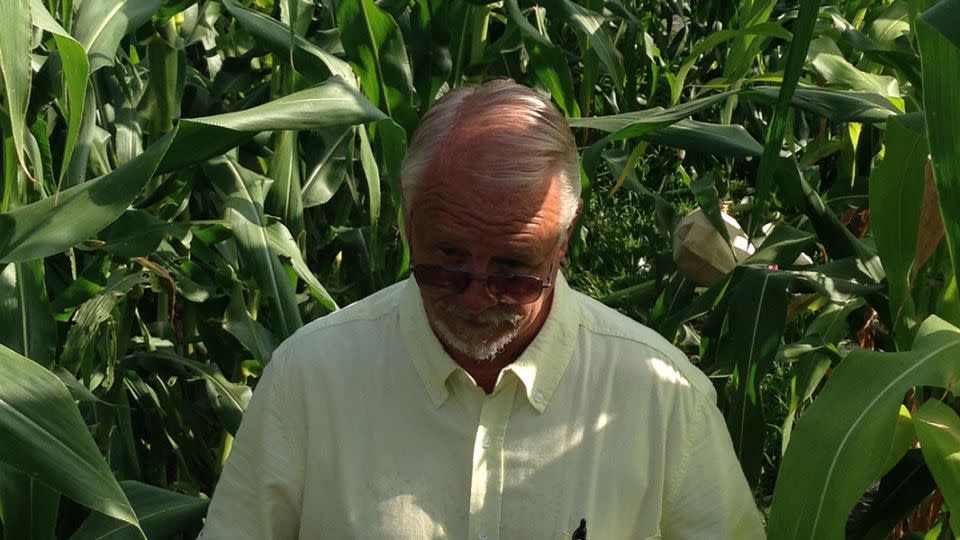

Ward has been growing Jimmy Red corn for just over a decade to better understand its viability and biosecurity, or how well it resists disease. It can be grown with less water and requires less fertilization, Ward said. The root system is incredibly sturdy, making the plant less susceptible to tipping over in storms; Ward believes that this plant evolved from years of strong coastal storms while growing on South Carolina’s James Island.
“If the plants that survive and bear fruit are the ones whose seeds (farmers) save generations later, you have a plant with characteristics that can withstand high winds,” Ward said.
Ward said scientists who know the genetics of Jimmy Red corn can now transfer that genetic code to other commercially grown corn varieties that are sensitive to high winds.
Ward also pointed to his research on another heirloom grain, Carolina Gold Rice, as an example of using genetic breeding to combat high-salinity waters in South Carolina and the Mississippi River Delta, where most of the rice in the United States is grown and where there is extreme drought. It pushed salt water up from the Gulf of Mexico.
“Japanese scientists have found some genetic signatures that code for salt tolerance,” Ward said. “Carolina Gold has salt tolerance. But now we are breeding it to retain the characteristics of Carolina Gold but with higher tolerance. “We build on their research.”
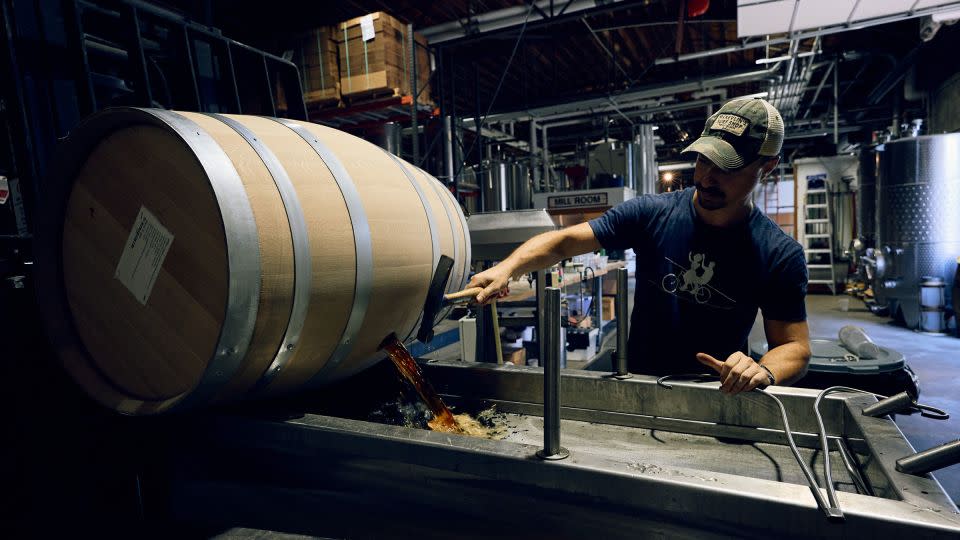

‘Old ways’
This September, Coxe harvested his 50 acres of Jimmy Red at his normal pace.
He’s no longer the sole grower of High Wire Distilling, which turns nearly 1.1 million pounds of red corn into a whiskey that co-founders Ann Marshall and Scott Blackwell call intensely complex with familiar nutty, sweet flavors.
“I call it reverse pioneering,” Marshall said. “This grain is tens of thousands of years old. Many things have survived and done so without human input. “We’re going back to the old ways and there’s a lot to learn.”
High Wire shipped beans to area farms to reduce the chance of a natural disaster like a hurricane destroying all of Jimmy Red.
Ward believes that a company like High Wire driving demand for relics will enable scientists to study the past to find answers to an uncertain climate future.
“If we lose this genetic material, we can’t replace it,” he said.
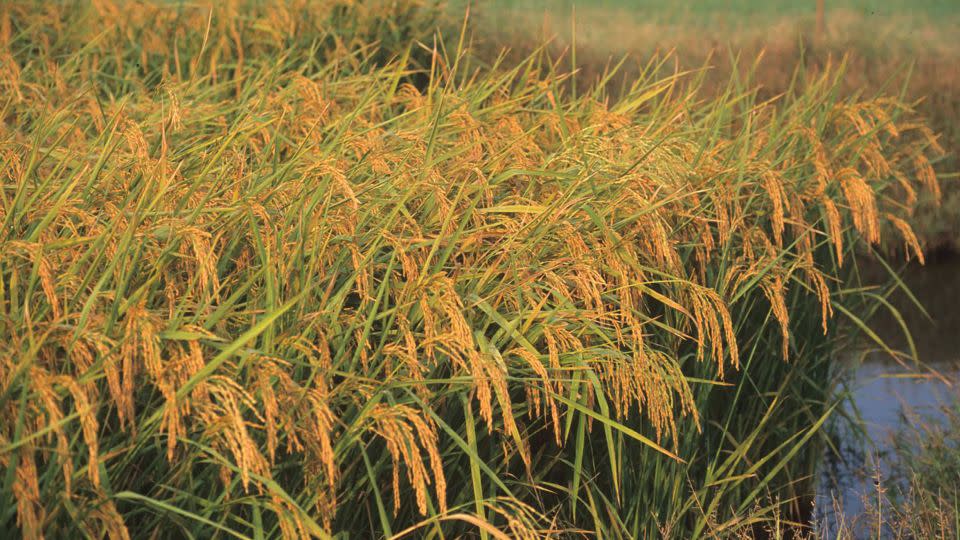

For more CNN news and newsletters, create an account at CNN.com